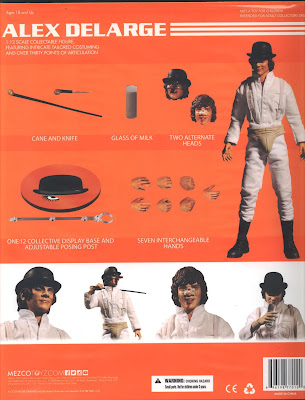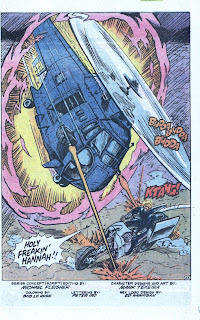Alex DeLarge ONE:12 Collectible Figure
Mezco, 2018
Just in time for Christmas 2018 comes your very own Alex the Droog Action Figure !!!!!
Made for the higher-end action figure collector, this 'ONE:12' series reproduction stands about 6.7 inches tall. It's available from your favorite online retailers (pricing can vary, but is usually around $80).
Mezco also is marketing a 12" Alex figure in a traditional 'window box' package, with just the cane and a single mask as accessories, for around $40. I'll have a post on that figure forthcoming.
Note that to complicate things even further, Mezco also makes a 'stylized' 8.5 inch Alex DeLarge action figure with a 'big head', also priced at around $40..........it's easy to confuse these three models of action figures.
The ONE:12 edition of the action figure is elaborately packaged in a special slipcase box.
Your Alex figure comes with all sorts of clever accessories: a cane and knife; a glass of milk straight from the Korova Milk Bar; seven interchangeable hands; and two different interchangeable heads - one representing Alex in all of his Droog glory, the other, his visage battered after being worked over by his former mates 'Dim' and 'Georgie'.
I can't help laughing to think what the reaction would have been to such an action figure had it been released alongside the film in 1971. I'm sure there would have been a tsunami of outrage. It just goes to show you how times have changed.





















































































